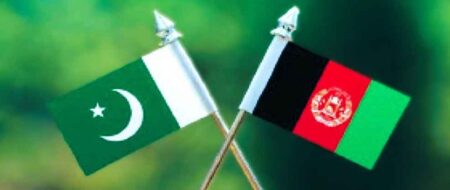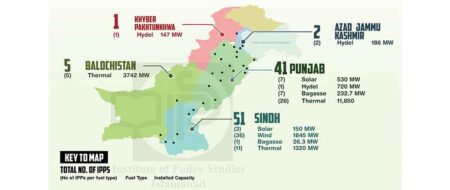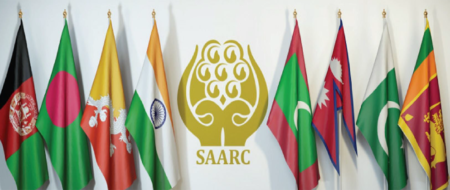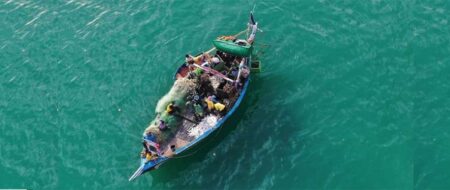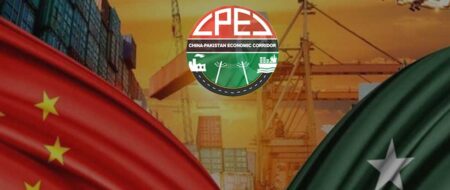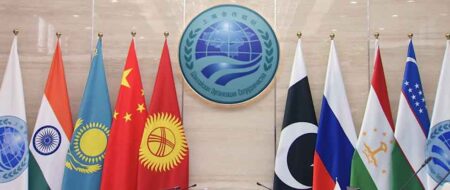Pakistan’s Economy: Covid-19 Pandemic and Federal Budget 2020-21
This policy brief reviews the current (FY 2019-20) economic conditions and specifically focuses on the economic issues resulting from the Covid-19 pandemic. The purpose of the review is to provide necessary immediate recommendations to address the economic problems faced in the context of Covid-19. In addition, it aims to devise a reliable, practical and long-term framework for economic development in the domains of Budget 2020-21. Institute of Policy Studies has prepared this brief in the format of an essay supported with relevant economic data in footnotes.
Download PDF |
1. Current Economic Condition
For several decades, the people have been hearing the narrative: “Pakistan’s economy is in a dire state and exceptional initiatives are needed to deal with the situation”. However, the situation has worsened[1] during these long decades instead of getting better[2]. Discussions on the need of a new policy plan and setting future priorities tend to increase ahead of every budget announcement. Irrespective of the claims by incumbent governments, the limitations of budget-making authorities have become very obvious in the last few years. The limitations are: no fiscal space remains for the government to plan some extraordinary measures after taking care of inevitable current expenditures[3], and therefore, budget-making and passing process becomes a mere constitutional tradition.
A look at the
performance of the incumbent federal government’s two years in office reveals
just additions to the drastic economic situation and nothing constructive. As
such let us not have high hopes from federal budget 2020-21 in view of the deteriorating
figures[4] of
the last few weeks. The effects of Covid-19 (over the past more than three
months) have added to the misery of an already depressed economy[5].
The foreseeable impacts of Covid-19 were evident to some extent but lack of
coordination and a comprehensive strategy have enhanced the severity of the
situation.
The pandemic is
expected to persist for some time and hence it will badly impact the economy.
However, there are hidden opportunities in every problem and therefore federal
budget 2020-21 should be taken as a starting point for vital decisions on a
roadmap for economic prosperity. In this regard, the pandemic has provided
relief to government in various aspects. For instance:
- Reprieve in the form of international aid and loans from IMF worth $1.386 billion while all expenditures by government related to Covid-19 will be excluded from EFF agreement of 39 months. Asian Development Bank (ADB) has provided a loan of $305 million besides $200 million by World Bank (WB) to deal with the pandemic. In addition, around $12 billion in repayments have been rescheduled to 2022 by the G20 countries.
- Significant drop in international oil prices and decline in domestic demand have relieved pressure on balance of payments and hence decline in import bill. The low oil prices will also provide relief to domestic industry and transportation in context of lower costs of operations. Hence, after a long time, the government is presenting a budget when it has no significant compulsions in the domains of debt payments and balance of payments.
2. Priorities for Budget 2020-21
The budget-making process is an inevitable activity and constitutional compulsion. In this regard, it would be adequate to recommend lowering of non-development expenditures[6] and rationalization of tax collection mechanism. More importantly, it is necessary to ponder upon the opportunities in the domains of societal priorities, needs and economic activity. Following is a policy discussion on food security, social and health security, energy security, industry sector, services sector, tax collection system and governance issues.
2.1 Food Security
The outbreak of
Covid-19 has endorsed the significance of food security, specifically in times
of pandemics. Therefore, the agriculture sector becomes the priority area when
discussing food security. In this domain, designing a two-tier policy of
immediate steps and long-term initiatives that not only cater to the food needs
of increasing population but also enhance the export of food items becomes all
the more important. On the other hand, the agriculture sector is also
significant while considering employment opportunities for a large section of
the country’s population.
Practical steps
for the suggestions given below will help in accomplishing the immediate needs
of food security and achieving long-term objectives.
- Wheat is considered the staple food of the country since it is part
of daily meals of 72% of the population. On average, an individual consumes 124
kg[7] of
wheat annually. As such what is required is a robust and effective policy to
enhance the production of food crops (wheat, rice, corn and sugarcane) to
fulfill the domestic needs and exports. - Import of food crops needs to be discouraged while encouraging
import of those crops that act as raw material for national industry. It is
also recommended to ban import of food items prepared from non-natural
ingredients and expensive items that are used by only the elite. There is also
a need to change the behavior of people towards consumption of locally grown
fruits, vegetables and crops. - Livestock[8] is
the biggest subsector of agriculture having a share of 60.54% and contributing
11.22% to the country’s GDP, which amounts to Rs1440 billion (2018-19).
Livestock exports are 3.1% of the total and provide livelihood to around 4
million of the rural population. It is vital for providing milk, meat, leather,
etc. Keeping in view the substantial potential of the subsector, the need is to
enhance its role in the domains of domestic and external sectors of the
country. However, before devising any policy for this subsector, a detailed
livestock census should be conducted since all the relevant data is based on
estimated figures of surveys of 1996 and 2006. Small-scale farmers and
unemployed rural families should be supported at government level to start
livestock farming by following advanced technologies. - Fisheries is providing livelihood to the population living in the
coastal areas of the country and contributing significantly to exports[9].
In FY 2018-19, 575000 metric tons of fish and related items were extracted from
the sea and rivers. It is a significant contributor in meeting the demand of
meat and productive capacity may be enhanced by merely regulating the sector,
and hence increasing the volume of exports. In this regard, smuggling of fish
and related items needs to be curbed immediately. Additionally, small fishermen
should be given the status of SMEs and provided financial and technological aid
by planning joint programs of SMEDA and financial institutions of the country.
On the other hand, advanced fish farming techniques (aquaponics fish farming)
should be taken up at government level by initiating the project in specific
areas of the country. - One of the alarming issues in agriculture is post-harvest food loss
and an Asian Development Bank (ADB) report[10]
estimates that the country could save almost $1 billion by tackling only 75% of
the problem. On the other hand, a large quantity of fruits is lost in orchards
due to non-availability of labor and lack of interest of existing potential
labor. In this regard, entrepreneurial training programs need to be initiated
for local youth in which they are imparted skills in food processing and
packing. Banks and financial institutions should be encouraged to finance the
projects, which would not only bring employment but enhance the business skills
of youth. This scheme could also help in curbing to some extent the losses
incurred in fruit and crop fields due to urbanization. - The barren and unutilized agriculture lands of the country should
be allotted on easy long-term lease plans to graduates of agriculture
universities. This step will help in improvement of agricultural production and
increase in employment. Along with that kitchen or rooftop gardening in urban
areas needs to be encouraged. - The import of edible oil[11]
is a significant burden on the import bill. However, indigenous resources may
be efficiently utilized to lower this burden. Most of the agriculture land of
the country is suitable for edible oil-rich crops such as soybean[12],
sunflower[13],
canola, corn and olives. Enhancing the production of these crops by providing
financial and technological incentives to farmer will help in saving foreign
reserves and increase in viability of food security. - It has been previously mentioned in the brief that an individual consumes
on average 124 kg of wheat annually, but the actual figure is 102 kg[14].
The difference is food loss, which is equivalent to 5 million tons of wheat
annually. For this reason, it can be said that the country’s real problem is
food loss and not food scarcity. - The shifting of rural skilled farmers to urban areas should be
discouraged along with ensuring some level of agricultural activity while
establishing new urban societies. - The Plant Protection Department, which has four different tasks
(plant quarantine, registration of pesticides, locust control and survey, and
aerial wing), is dormant since almost two decades. The department needs to be
reinstated in its true spirit for controlling locust attacks in future. - It is also a significant point to ponder that why locust attacks
have become so severe. The widespread commercial use of hybrid seeds may
possibly be the reason in addition to environmental issues. In this regard,
indigenous research needs to be conducted.
2.2 Social Security
2.2.1 Health Sector: Health is the second sector whose vulnerabilities and shortcomings have been exposed during this pandemic. The issues of both quantity[15] and quality[16] should be taken care of in this sector. The vulnerabilities of public health services are not confined only to Pakistan but such issues are being faced worldwide. It may be due to complete reliance on the practice of allopathic means of medicine[17]. The focus should be on orthodox and conventional means of treatment and promotion of curative rather than preventive means. These are topics that need to be the part of research.
- Public awareness needs to be enhanced regarding severe side effects
of allopathic medicines specifically in minor and negligible medical issues.
These issues may be catered with preventive measure, herbal medicines and
intake of food mentioned in sayings of Prophet Muhammad (SAAW). This enhances
immunity of the body and there may be no impact of seasonal minor diseases.
Currently financial aid is inclined towards research and development of allopathic
way of treatment and medicines. However, other means of medicines and
treatments claim to be more effective than allopathic and therefore, resources
should be utilized for research in this domain. - The pandemic has endorsed the importance of health sector and
therefore share of allocated funds[18]
in budget should be increased.
2.2.2 Volunteer Sector: The volunteer sector holds a significant position in social
services and security. The pandemic, on the one hand, has exposed the lack of
coordination, ill governance and chaos in government quarters and, on the other
hand, has demonstrated the passion for helping and volunteerism among the
common people. The government announced a relief package of Rs12,000 for three
months for the lowest income groups of the country, but it is the volunteer
sector that provided items of sustenance to the destitute and successfully
blocked the way of possible panic and chaos.
- Charity and volunteerism have emerged as an internal strength of
Pakistan’s society on which the nation should be built. It is also evident that
the sector has throughout history worked without any support from government.
However, the so-called war on terror has increased problems for people and
organizations operating in this sector. In this regard, legislation is required
to enhance the behavior and trends of organized volunteerism and on the other
hand, strict filter and controls need to be implemented on funding coming from
abroad that may influence the sector negatively. - The system of zakat and usher is an extraordinary one that requires
more emphasis. The system is working at the governmental level and the severity
of its breakdown can be gauged from the fact that zakat funds collected at
zakat institutes go to waste[19]
and a big chunk is used on organizational matters. Various researchers[20]
have calculated the potential of the country in the domains of zakat, usher and
other charity, and believe that the social security system could be run solely
on these funds if managed properly and without corruption. Historically, this
system has proved its usefulness in eradicating poverty and if revived and implemented
with honesty and in true spirit, may bring exceptional results for the country.
2.3 Energy Security
Energy security
is as important as food and social security and holds an inevitable position in
running of businesses and industry. Serious efforts in the last few years have
spared the country from serious issues and complexities following the outbreak
of the pandemic. However, looking at the energy mix[21]
of the country, a large portion of energy is still obtained from oil and
related items, which is not only adding burden on the import bill but also on
consumers.
- Pakistan’s
geographical location has enriched it with huge resources of renewable energy.
In order to utilize these resources for obtaining energy, awareness among the
general public and stakeholders, policy building and legislation through
incentives, provision of training and necessary equipment are some of the
issues that need to be addressed while gaining benefits at industry level. - Packages to encourage and take advantage of utilizing energy
through renewable energy sources (solar, wind, etc.) may be linked with
incentivized construction sector in a way that a person who builds a new house
(1 kanal area at least) and installs renewable energy source should be given
tax rebate equivalent to cost of installation. Similarly, factory and mill
owners should also be encouraged on the same lines and incentives may include
subsidy in utility bills and income tax. Legislation on net metering was done a
long time ago, but implementation process is so slow that during almost last
five years only 3,000 people benefited from the facility. There is a need to
launch awareness campaign in this regard along with providing solutions to
relevant problems. - Pakistan has
five oil refineries and the lockdown due to the pandemic led to a decline in
demand of oil in the country. This resulted in shut down of operations of two
of the refineries because of completely filled storage facilities. Therefore,
the benefits of low international oil prices could not be availed by Pakistan
due to storage issue. The government should go for forward contracts of oil on
current prices and ask oil-rich friendly countries for deferred payment of one
year. This will reduce burden on import bill. - There is no role of Pakistan National Shipping Corporation (PNSC)
in oil shipments of the country[22].
Pakistan pays international shipping companies $5-6 billion annually under the
head of freight charges. It is worth mentioning that PNSC is one of the few
profit-making SOEs[23].
Pakistan could save $5-6 billion annually without spending a dime if oil
shipment is completely assigned to PNSC.
2.4 Manufacturing Sector
The pandemic
has also exposed the lack of diversity in the country’s industry sector. The
demand for medical equipment and instruments has increased exceptionally at the
international level and those countries having the capacity to respond to
demand or expand their potential to cater the need have benefited a lot.
Pakistani
industrialists have innovative ideas and skills but in order to materialize
these ideas, they should be incentivized and facilitated at the governmental
level.
- There are around 3.3 million cottage and small industry or
manufacturing units, which are providing employment to 16% of the total labor
force of the country. They lack the government’s attention despite contributing
30% to GDP. In order to revive the sector, the government should advise banks
and financial institutions to provide loans on relaxed terms and conditions. - Small and medium level enterprises encompass various sectors from
agriculture, textile to fisheries, and need special attention. In order to
enhance their technical capacity, import duty should be waived off on advanced
technology equipment, which would equip SMEs (contributing 30% to GDP) to
significantly contribute in the export pool. Recommendations regarding
establishment of food processing units in food security sector need special
initiatives. - Bank loan facilities should also be extended for SMEs and in this
regard banks should design financial models on basis of partnership and mutual
risk sharing. - Lack of government supervision and assistance is decreasing the
export potential of various manufacturing units[24].
In order to revive and enhance their potential, immediate steps of tax rebates
(export-related taxes) and concessions in utility charges should be given in
the budget. Special incentives at government level should be given to these
industries for enhancement of their potential and technology by importing
advanced machinery.
2.5 Services Sector
The services
sector is the biggest sector of the country in the context of its contribution
to GDP, i.e. 61% (Pakistan Economic Survey 2019). In addition, the subsectors
of wholesale and retail trade, transportation and communication, and banking
also add to the importance of the sector.
2.5.1 Communication:
Information Technology (IT) is one of the main organs of communication.
Contrary to the negative impacts of the pandemic, it has enhanced opportunities
of high growth in digital and cyber world. The use of technology has increased
manifold during lockdown in the domains of education, health, retail trade and
marketing. On the other hand, the impact of the pandemic on behaviors reveals a
long-term opportunity for the IT sector. The use of digital communication at
corporate level is resulting in reduction of various fixed costs (rents of
offices, etc) and on the other hand relief in the form of slowing migration of
people to big cities. Keeping in view the emergence of its extraordinary importance,
the sector demands serious efforts.
- Pakistan has substantial potential in this field, therefore, it
should jumpstart programs in the domains of infrastructure and skills.
Assistance and incentives in technical aspects (increment in bandwidth speed, education
and training regarding software and hardware, and provision of connectivity in
remote areas of the country) will bear fruit due to presence of skilled human
resources potential. In this regard, possible increase in demand of internet
requires enhancement in whole bandwidth infrastructure rather than just
internet speed.
The role of Ministry of Information Technology is very important in
developing programs to utilize indigenous human resources potential to develop
software and applications that not only cater to the domestic demand but also
add to export income.
- The change in priorities and behaviors will demand development of
new physical infrastructure that would end the importance of many old ones.
Therefore, there is a need to develop a comprehensive strategy that would help
the economy and also untap various new opportunities for employment. In this
regard, research activities at academic institutions should be maneuvered
towards these domains. - A significant cut in funds of higher educational institutes in last
year’s budget led them to manage 70% of their expenditures by themselves. This
raises the question that should these universities still be categorized as
public. In this regard, the role of HEC has also become very controversial. It
is therefore recommended to increase the allocations in the budget for higher
educational institutes and HEC in coordination with industry design projects
and programs that not only provide funds but also enhance coordination among
academia and industry.
2.5.2 Banking
Sector: The
resilience of the banking system has emerged positively during the pandemic but
viability of these strengths will be shown once the economy starts moving at
full throttle. On the other hand, the role of banking sector in running the economy
is important. In this regard, following measures will be helpful in current
economic situation:
- Further reduction in policy rate[25] by
State Bank of Pakistan (SBP) is suggested so that savings are maneuvered
towards investment. - Industrial and business loans should be distributed at rapid speed
and introduction of new models based on partnership will enhance the confidence
of business sector. - Small and medium enterprises should remain focus of attention as
far as partnership schemes are concerned because one of the major problems
these enterprises face is of capital. In addition, industries that focus on
exporting their products should be given special concessions and privileges in
investment schemes.
2.5.3 Tourism: Tourism
remained priority sector of incumbent government and undoubtedly it has created
many opportunities for the country. However, the impact of the pandemic on
transportation has limited the take up of opportunities. It is believed that
behavior of people has shifted more towards religion and this increases the
potential of religious tourism. It is therefore the right time to prepare for the
potential in this area and the outcome may emerge after international
travelling starts.
- Prime Minster of Pakistan has recently reopened the tourism
industry but in current situation international tourists may not come. However,
opportunities of local tourism are available and for this the quality and
quantity of tourism-related facilities (transportation, food, residence, etc.) should
be ensured.
2.6 Overseas
Pakistanis
The issue of
unemployment in the country has intensified and due to Covid-19 it is feared
that a number of overseas Pakistanis, especially from the Gulf countries, may return.
Despite the obvious impacts, no serious efforts are seen by the government
quarters. In this regard, while designing the policy, following three aspects
need to be taken into account:
- Diplomatic efforts should be utilized to reduce the chances of returning
of Pakistani expats from overseas and also to delay their arrival as much as
possible. This whole effort should be an organized procedure. - Opportunities should be created for inducting returned overseas in
various sectors. - The savings of returned expats may be utilized in productive
domains so as to enhance the economic development of individuals as well as of the
country.
2.7 External
Sector
The external
sector may be seen in three sections: exports and imports, remittances, and
external loans. One of the major economic challenges the country is facing is
current account deficit, which is also related to this sector.
The lockdown
and decline in international demand have badly impacted the sector and
specifically exports of the country. On the other hand, the impact of the pandemic
on major world economies led to unemployment of a large number of overseas
Pakistanis, which has triggered a major decline in remittances. Thirdly, the heavy
burden of international loans and their payment is another big challenge in
this domain.
Detailed and
comprehensive policy suggestions pertinent to the sector are mentioned in
relevant sections of the brief. But one of the significant aspects needs to be
mentioned here. Considering the current economic condition and changing
dynamics at international and national levels, demand renegotiation of the IMF
program since keeping existing economic and structural conditions intact may
lead to more disaster for the economy than bringing any benefit.
2.8 Taxation
Tax revenue is
one of the major sources of revenue for the country and therefore holds a
significant position in the budget. The alarming aspect in this regard is that no
significant increase has been seen in tax revenues in the last three years. It
is undoubtedly due to lack of coordinated planning and incompetence of the relevant
individuals and institutions.
Pakistan’s tax
to GDP ratio is 10%, one of the lowest in the world. A good taxation system
must be just, provide easement to people and impose less burden on tax payers. In
order to make the tax system more effective and in compliant with current
environment, the most important aspect is to increase the trust of people in the
government. This will also ensure tax payers that their money is not being wasted
and neither distributed in government corridors. This is the very reason that Pakistanis
are on top of the list in charitable activities but lowest in paying taxes.
The second most
important aspect is revamping the tax system – from oppressive and fear policy
towards trust-building and friendly environment. In addition, tax collection
process should also be made simple and understandable for every individual.
- Imposing any new tax in current times would be considered as ignorant
behavior of the government. In fact, in order to bring relief in the lives of
people, rationalization of taxes is recommended. In this regard, rebates and
concessions in domains of GST and income tax will increase the disposable
income of people and ultimately have a positive impact on domestic demand. - Reliance on indirect taxes should be discouraged and focus should
be shifted towards direct taxes. The depressed nature of the national economy,
high inflation and difficulties for low-income people call for measures to
increase domestic demand. In this regard, it is necessary to ensure that there
is no decline in nominal income of low-income group. - Strict action against tax defaulters is needed and nonproductive tax
rebate schemes (amnesty scheme, etc.) should be banned and more efforts should be
put in establishment of a strong and viable tax system. - Rationalization of subsides should also be done and the sectors
lacking the capacity to compete in international markets should not be given
subsidy to export products. A recent example in this regard is the sugar
scandal and shortage of sugar at national level.
2.9 Governance Issues
The real
problem of Pakistan is not scarcity of resources but ill management and bad
governance. Irrespective of great potential of efficacy in a policy suggestion,
if not implemented in its true spirit, would lose credibility. The chronic ills
of corruption, nepotism, incompetency, lack of responsibility in managing
resources, and lack of basic ethical values are making every effective and
sound policy guideline practically ineffective.
On the other
hand, in the current environment, there is a need to reduce polarization among
institutes, organizations, political parties and individuals. A consensus among
all the stakeholders needs to be developed through a comprehensive economic
policy. However, the current situation in this regard is bad and not suitable
for economic stability.
- The increment in responsibility of provinces after 18th Amendment
demands a suitable environment to design comprehensive plan and strategy to
cater to any emergency related to Covid-19. In this regard, role of National
Finance Commission (NFC) is very important and therefore serious discussion may
be held on issues of NFC. Additionally, other stakeholders (volunteer sector,
industry, etc.) should be taken on board while designing policy. - The chronic ill of corruption should be dealt with an iron hand and
the involved people should be severely punished. It is also necessary that persons
convicted for corruption should not be allowed to directly or indirectly hold
any public office forever. - The hiring procedure of public officers should include traits of
honesty, truthfulness and high moral values in addition to professional
competency. The hiring of people on the top post of prominent public offices
may be replaced with the criteria of promotion for these posts. This will
increase the sense of competence, confidence and effort to work hard in
employees and also bring benefits to organizations. The governance model of
SOEs earning profits may be made model for other organizations. - Only a few weeks have passed since the outbreak of the pandemic but
a shift in behaviors and work culture has emerged while coping with the lockdown
and social distancing. These social behaviors and norms are temporary but a
focus on the positive impacts of these shifts may lead to permanent adoption of
these behaviors. For example, business activity in the markets and shopping
areas is restricted till evening, which is a good start to adopt the policy of
utilizing maximum daylight for business activities. Similarly, simplicity and
humbleness needs to be promoted in living style and eating behaviors and
austerity parameters in non-development expenditure of the country.
Prepared by:
Khalid Rahman
Executive President (kr@ips.net.pk)
Asim Ehsan
Research Officer (asim@ips.net.pk)
For queries:
Naufil Shahrukh
General Manager Operations (naufil@ips.net.pk)
References
1 The average growth rate in the decade of 2000-2010 remained 4.3% and it would decline to 3.8% in the decade of 2011-2020.
2 In the last
ten years, the budget deficit of the country hovered around 4% to 6 % of GDP
and it is due to two main reasons; growth in increment in tax revenues is
substantially less than growth in expenditures, significant increase in
non-development expenditures and burden of high loans. Every year, the
government sets target in budget documents of decreasing the budget deficit. Last
year, one of the targets in the IMF agreement was a substantial decrease in
fiscal deficit and achieving primary surplus. Therefore, it is not part of the
policy of the government to have budget deficit but due to burdens of economic
situations.
3 Total expenditures
in FY 2018-19 of the country were Rs6419 billion, out of which Rs5589 billion
were current expenditures and Rs829 billion were part of development
expenditures. However, the total revenues remained at Rs5062 billion (Budget
document 2019-20). This means that total income of the country is even not
sufficient to fulfill the non-development or current expenditures.
4 Inflation
ranged between 9% and 10% (8.2% in May 2020), policy rate stayed at 13.25%
almost for the whole year (reduced to 8% now), negative growth expected in
manufacturing sector due to slow economic business. Decline in the crop yields
as compared to targets. Low tax revenue in first three quarters as compared to
the target (July 2019 to February 2020, Rs2720 billion) of current fiscal year
(2019-20). Poverty and unemployment rates increased. Exports remained stagnant
at $22.5 billion for some years, however, imports declined from $47.3 billion
(July to March FY19) to $39.6 billion (July to March FY20). But most of the
items on this list relate to raw materials of the industry, which is not a good
sign. Government loans and liabilities reached to Rs44 trillion which are 94%
of total GDP.
5 At the start
of March 2020 (three quarters of the fiscal year had passed) pandemic Covid-19
hit the already depressed economy. The manufacturing sector closed completely
due to lockdown and hence increased poverty and unemployment, and expected
decline in exports and remittances. On the other hand, the agriculture sector
has been severely attacked by locusts, which impacted the yield of major and
minor crops in some parts of the country. In the last quarter of FY20, GDP
declined by 9% amid fears of negative 0.4% growth at the end of year. In
addition to this, 30% decline in tax revenues is seen, budget deficit has gone
to 9.6% of GDP and primary deficit stands at 2.9% (however IMF targets were
primary surplus at the end of FY20).
6
Non-development expenditures in the first two quarters of FY20 were Rs3721
billion and total revenues at Rs3231 billion (SBP quarterly reports).
7 GIAN Report
Number: PK 1704
8 Pakistan has
approximately 47.8 million cows, bulls etc., 40 million buffaloes, 31 million
sheep, 76 million goats, 1.1 million camels, and 0.4 million horses (Pakistan
Economic Survey 2018-19).
9 Rs39 billion
in FY 2018-19.
10 “Dysfunctional
Horticultural Value Chains and the Need for Modern Marketing Infrastructure:
The Case of Pakistan,” Brief of ADB, October 2019.
11 Pakistan is
the fourth biggest country for edible oil import. It imported $1.767 billion of
edible oil in FY19, which is 37% of total food imports.
12 Soybean can be
planted in all four provinces of the country. Pakistan Agricultural Research
Council (PARC) has identified 36 different areas in the country that are
suitable for soybean.
13 Sunflower is
also another common crop and can be planted in almost all areas of the country.
14 A daily
newspaper renowned for economic and business reviews published a research
report that states: A person on average eats 4 chappatis a day. Weight of one chappati
70 grams, total weight consumed per day 280 grams. The total wheat consumed by
an individual in a year would be 280 grams x 365 days = 102 kg.
15 In public
domain: 1,279 small and big hospitals, 5,671 dispensaries, 747 child and
maternity centers, total beds in all hospitals and dispensaries are 132,227,
for 80% (poor and middle income) of total population. It means for every 1,300
people, there is one bed in hospitals.
16 Almost all
public hospitals, except some in the big cities, lack basic facilities and
equipment; and oxygen cylinder is included in these categories of basic
facilities. The situation of ventilators has been exposed by outbreak of the
pandemic.
17 Other means of
medicine that have less or no side effects are; homeopathy, naturopathy, herbal
medicines, phytotherapy and younani medicines.
18 There were
Rs11 billion (current expenditure) and Rs12.6 billion (development
expenditures) allocated in Federal Budget of 2019-20.
19 The Auditor
General submitted a report in the Supreme Court which disclosed fraud and
embezzlements of Rs3.67 billion out of total funds of Rs5.96 billion of
Pakistan Bait ul Maal and Zakat Department.
20 A recent
research by teachers of Quaid-e-Azam University revealed the potential of zakat
and other charities as $6 billion annually.
21 Total
installed energy capacity (2018) 35,979 MW and 67% of this is produced from
thermal (coal, oil, gas and others), 24% from hydel sources, 4% from nuclear
sources and approximately 5% from renewable sources.
22 Total volume
of international trade of Pakistan is almost 100 million ton annually and 15%
of it is shipped by PNSC and none in the domain of oil shipments of the
country.
23 PNSC is
earning net profit of Rs2.5 billion annually since the year 2000.
24 Surgical
Instruments manufacturing industry in Sialkot has potential of exporting these
instruments and equipment. Export volume of this sector is declining, in FY2018
it was $441 million which reduced to $437 million in FY2019. Leather industry
and knife manufacturing industries are some other examples in this regard.
25 Currently it
is 8%.



